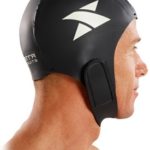 Many of us use or saw swimming caps at professional swim competitions. You may think that they are used only for hair style protection but it’s not all true, they serve for a better purpose. The main reason people wear neoprene caps is a huge protection from temperature swings, especially if you are swimming in cold environment, but let’s break down one by one below.
Many of us use or saw swimming caps at professional swim competitions. You may think that they are used only for hair style protection but it’s not all true, they serve for a better purpose. The main reason people wear neoprene caps is a huge protection from temperature swings, especially if you are swimming in cold environment, but let’s break down one by one below.
Protection
Covering the hair and scalp by fitting the head smoothly. The head needs protection from chemicals in the pool, especially hair are sensitive. Chemical used in pools is chlorine and it damages hair and causes other health issues, but the most visible is that it effects the color of the hair. It becomes a real big problem for those people who spend a lot of time in pools.
Neoprene swim caps protect head from cold if you love to swim in open water and if it’s not too hot outside. From the other hand, it will protect your head from direct sunlight if it’s very hot. It’s perfect to use in early spring or autumn. Neoprene made ones will let you enjoy swimming no matter what weather conditions are, they will save your day .
Reducing Resistance
If you are swimming for a better time than you know that hair can slow you down, cap in this case helps to reduce the amount of resistance as you swim. If you are a professional swimmer the cap allows you to have a longer hair and still achieve good result in the pool.
Identification Of Swimmer
There are situations then you need to identify swimmers in the water and in this case caps come to help. In competitions, there are caps with numbers and country or team logos, or even different color caps are used for this purpose.
Keeping The Pool Hairless
Caps help to keep the pool clean. It helps to maintain pool filters as hair who end up in the pool will finally end up in the filters and may clog them. Some operators are requesting to wear caps as a necessary thing to keep their system clean.
Top 6 Best Neoprene Swimming Caps
| PHOTO | NAME | RATING(1-5) |
|---|---|---|
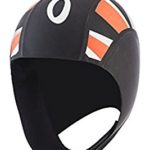 | Orca Thermal Unisex Neoprene Swimcap | 4.9 |
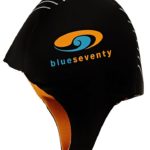 | Blueseventy Thermal Skull Cap | 4.5 |
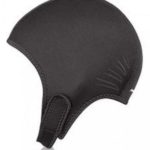 | Aqua Lung 3mm Hot Head Hood | 4.3 |
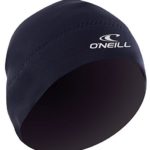 | O'Neill Wetsuits 2 mm Beanie | 4.0 |
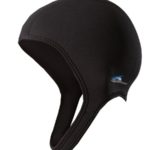 | NeoSport Wetsuits Premium 2.5mm Sport Cap | 4.0 |
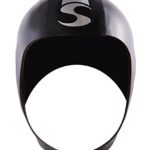 | Synergy Neoprene Swim Hood | 4.0 |
Key Takeaways
- Neoprene swim caps provide superior warmth and water resistance, making them ideal for cold-water swimming.
- Compared to other materials like latex or silicone, neoprene offers distinct advantages in terms of durability, comfort, and insulation.
- Understanding the unique features of neoprene swim caps can help swimmers make an informed choice based on their specific needs and swimming conditions.
There are many materials used to make caps and each of them serve it’s own purpose. It can be made from lycra to latex or silicon. Neoprene is used to make caps that protects from cold water or weather. Many swimmers do not recommend Lycra as it slows you down by adding more drag. For practices it is recommended to use latex or silicon caps in closed pools and in open water ones made from neoprene is the best.
Swimming, an activity beloved by many, is not just about technique and stamina; it’s also about having the right gear. One essential piece of equipment is the swim cap, and among the various materials available, neoprene stands out. This article delves into why neoprene swim caps, often overshadowed by their latex and silicone counterparts, are actually the superior choice for certain swimming conditions.
The Neoprene Advantage: Warmth and Durability
Neoprene, a synthetic rubber, is renowned for its exceptional thermal insulation. This makes neoprene swim caps particularly suitable for open-water swimming in colder environments. They retain heat significantly better than latex or silicone caps, ensuring the swimmer’s head remains warm, which is crucial since a considerable amount of body heat is lost through the head.
Durability is another hallmark of neoprene. Unlike latex caps that can tear easily or silicone caps that may degrade over time, neoprene swim caps are robust and resistant to wear and tear. This resilience makes them a cost-effective choice in the long run, despite a higher initial price point.
Comfort and Fit: A Snug, Secure Experience
Neoprene caps offer a snug fit without the tightness that often comes with latex caps, reducing headaches and discomfort during prolonged use. This snug fit also plays a role in hydrodynamics, offering less resistance in water, which can be a subtle yet valuable advantage for competitive swimmers.
Moreover, for individuals with longer hair, neoprene caps provide ample space without exerting excessive pressure, a common complaint with other materials.
Water Resistance and Buoyancy
Neoprene’s water-resistant qualities are superior to latex and silicone. This resistance helps in keeping the head dryer, which can be a significant comfort factor during long swims. Additionally, neoprene provides a degree of buoyancy. While this might be negligible in terms of overall swimming efficiency, it can contribute to a feeling of security, especially for novice open-water swimmers.
Health and Allergy Considerations
For swimmers with latex allergies, neoprene caps are a safe alternative. Unlike latex, which can cause allergic reactions in some individuals, neoprene is hypoallergenic. This aspect broadens its appeal and suitability across a wider range of swimmers.
Environmental Impact
It’s worth noting that neoprene, being a synthetic material, does have environmental implications. The production of neoprene is more energy-intensive and less eco-friendly than natural rubber. However, its durability means a single cap can last for years, potentially offsetting its initial environmental cost.
Choosing the Right Cap: Considerations for Swimmers
When selecting a neoprene swim cap, consider the following:
- Water Temperature: If swimming in colder waters, a neoprene cap is a must.
- Swimming Frequency: For regular swimmers, the durability of neoprene offers long-term value.
- Fit and Comfort: Ensure the cap fits snugly but comfortably, without causing pressure points.
- Allergies: If allergic to latex, neoprene is an excellent alternative.
- Environmental Concerns: Weigh the long-term use against the environmental cost of production.
Conclusion: The Ideal Choice for Specific Needs
While latex and silicone swim caps are popular for their affordability and wide availability, neoprene swim caps offer unmatched benefits in terms of warmth, durability, and comfort, especially in colder swimming environments. Their hypoallergenic nature and snug fit make them a suitable option for a broad range of swimmers. When choosing a swim cap, considering the specific conditions and personal needs is crucial, and for many, neoprene will be the material that meets those requirements most effectively.
In conclusion, whether braving the chilly waves of open water or looking for a durable, comfortable swim cap, neoprene stands out as a superior choice. Its unique properties make it not just a functional piece of swimming gear but a critical component for a comfortable and efficient swimming experience.